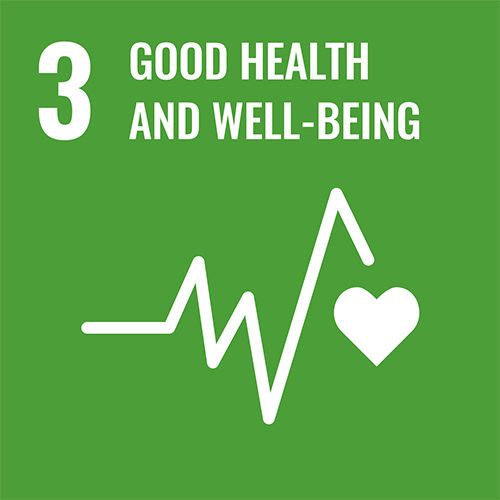Stereochemistry: Introduction to Chirality

Module Overview
This module has been designed to introduce second-year organic chemistry students to the concepts of stereochemistry through the lens of the World Health Organization’s Model List of Essential Medicines. PowerPoint slide decks, homework assignments, instructor notes, activities, and a summative assessment are included in this module.
Chirality is discussed, followed by enantiomers, diastereomers, racemic mixtures, and meso compounds. Optical activity and Fischer projections are also covered. These topics span a timeframe of approximately four 50-minute class periods.

Module Goal
Students should be able to represent and classify stereoisomeric relationships and evaluate the implications of synthesizing small molecules for use as chiral drugs.
Audience
Second-year organic chemistry students
Class Time Requirement
Approximately four 50-minute class periods
Module Authors
Kendra Denlinger, Xavier University; Rebecca Haley, University of Wisconsin River Falls; Heather Hopgood, Ohio University.

Module Summary
Assumed Prior Knowledge
Students should be able to demonstrate the following skills and concepts to successfully begin this module:
- Knowledge of basic concepts from general chemistry
- How to draw organic molecules in line-angle formula using wedges and dashes to represent tetrahedral carbon atoms.
Learning Objectives
Students will be able to:
- Define chirality and identify stereocenters in organic compounds, including pharmaceutical drugs
- Draw the possible stereoisomers of various molecules
- Distinguish between enantiomers, diastereomers, and meso compounds and explain their physical properties, especially in chiral environments such as the human body
- Use the Cahn-Ingold-Prelog convention to correctly assign R and S nomenclature
- Define racemic mixture and determine the enantiomeric excess of a mixture
- Explain some implications of stereoisomerism with respect to health and well being
Special Resources
Students will need to download TEST from the EPA’s website in order to use it for an in-class discussion and out-of-class homework assignment. The TEST tool is free to download from their website. Students will also need general access to the internet to do outside research.

Unit Overview
Unit 1: Introduction to Chirality
|
|
1.1 | Pre-class homework (20 minutes outside class). Problem on the similarities and differences between R- and S- carvone. |
1.2 | Lecture (10 minutes in class). Slides with an introduction to the module goals, chirality, and embedded discussion question over the pre-class homework |
1.3 | Lecture (20 minutes in class). Slides over identifying chiral centers, an introduction to the theme for the module (WHO Model List of Essential Medicines), and embedded think-pair-share question (identifying chiral centers in pharmaceuticals). |
1.4 | Lecture (20 minutes in class). Slides over the importance of chirality with historical examples and applications. |
1.5 | Unit 1 homework (20 minutes outside class). Problems on identifying chiral and achiral compounds and counting chiral centers in pharmaceuticals used to treat and prevent malaria. |
Unit 2: Enantiomers and the Cahn-Ingold-Prelog Rules
|
|
2.1 | Lecture (15 minutes in class) Slides with a how-to guide on drawing enantiomers followed by an embedded practice question on drawing the pair of enantiomers for both ibuprofen and nicotine |
2.2 | Lecture (15 minutes in class) Slides with a how-to guide on using the CIP rules to designate chiral centers as R or S followed by an embedded practice question on labeling the chiral centers in ibuprofen and nicotine |
2.3 | Unit 2 homework (20 minutes outside class). Problem on drawing pairs of enantiomers of several pharmaceuticals and labeling their chiral centers using the CIP rules |
Unit 3: Classification of Stereoisomers and their Physical Properties
|
|
3.1 | Lecture (30 minutes in class) Slides with descriptions and examples of diastereomers and meso compounds including embedded practice problems on drawing and identifying them |
3.2 | Lecture (20 minutes in class) Slides covering optical activity and Fischer projections including embedded practice problem on drawing Fischer projections from line-angle structures |
3.3 | Unit 3 homework (30 minutes outside class). Problems on drawing the stereoisomers of mefloquine, an antimalarial drug from the Unit 1 homework |
Unit 4: Implications of Chirality on Health and Well-being
|
|
4.1 | Lecture (15 minutes in class) Slides with descriptions and examples of racemic mixtures |
4.2 | Lecture (35 minutes in class) Slides describing chiral resolution and chiral synthesis; discussion and activity on predicting toxicological effects of new compounds |
4.3 | Units 1-4 SOCME homework (90 minutes outside class). Comprehensive assignment linking all modules together. Students will use a specific antibiotic to answer all the questions. Outside research will be required as well as using TEST
|
Download Module
Stereochemistry: Introduction to Chirality Includes:
- Module Overview Document
- Units 1-4
- Formative Assessments
- Summative Assessments

Copyright Statement
We encourage the reuse and dissemination of the material here for noncommercial purposes as long as attribution to the original material on the ACS site is retained. Material on this page is offered under a Creative Commons Attribution 3.0 License unless otherwise noted.
- Attribution required
- Allows remix of content
- Commercial use not allowed
About the Green Chemistry Module Project
The ACS Green Chemistry Instiute has partnered with chemistry instructors from over 45 institutions to develop green chemistry education resources for undergraduate students studying general and organic chemistry.








